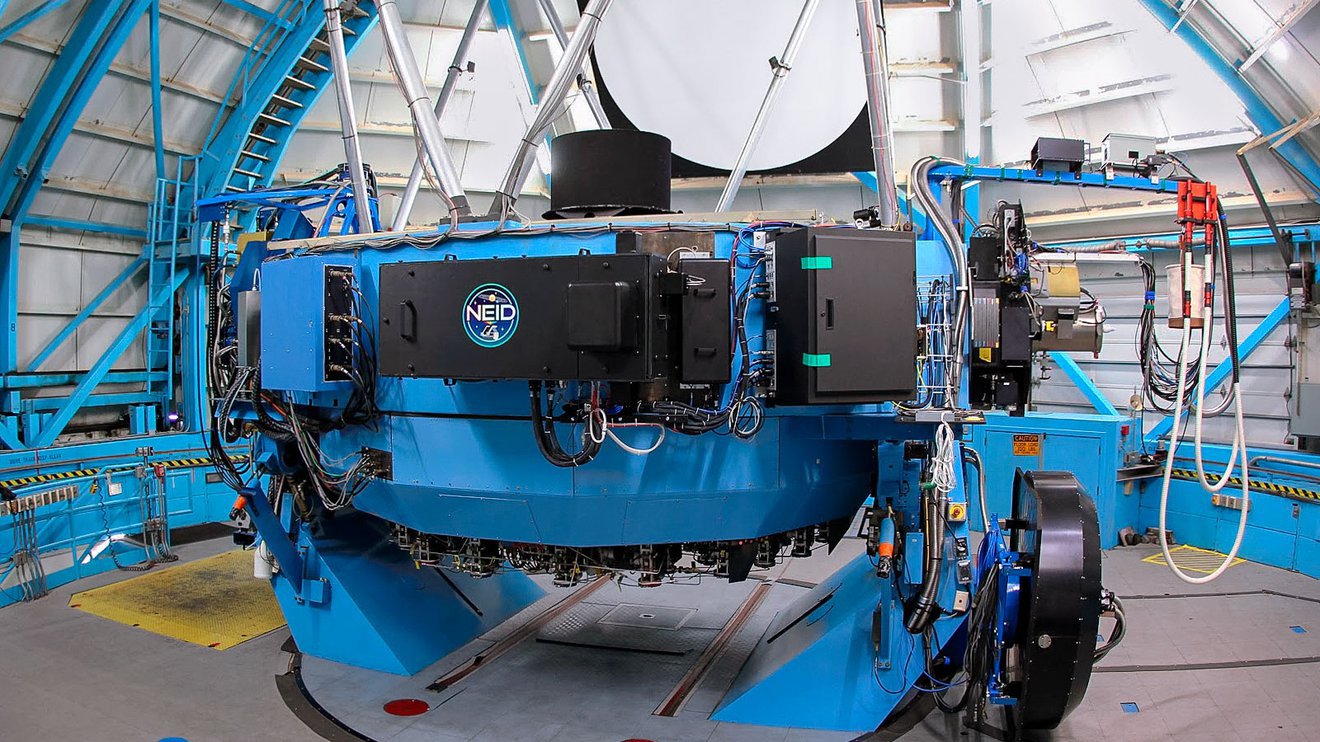“A spectrograph, at its most basic level, splits light into its various colors, or what we call wavelengths,” said Sarah Logsdon, the instrument scientist for NEID and an assistant scientist at the National Science Foundation’s (NSF) NOIRLab, a national center for ground-based astronomy headquartered in Tucson, Arizona. “That’s really useful to us because individual atoms and molecules have different emission or absorption at very specific wavelengths. With NEID, we can measure how much these absorption and emission lines shift relative to their rest position as a planet tugs on its star.” The size of that shift allows astronomers to determine the mass of the planet relative to the mass of its star.
One potential challenge to NEID’s observations is that the stars themselves can change. Hot plasma bubbles up from their interiors, cools, and falls back, while the whole surface quivers with seismic oscillations. Global and local magnetic fields create darker, cooler starspots and other visible features. All this activity makes it difficult to differentiate between stellar activity and the effects of exoplanets.
However, the Sun serves as a baseline to better understand stellar activity. In addition to taking light from the WIYN telescope, NEID will also receive light from a solar telescope mounted to the observatory’s roof. Over time, this solar data will help scientists identify similar events in their observations of more distant stars. After being processed to aid astronomers researching the issue of stellar activity, all data from the solar telescope is made public, with the first set of solar data released in June 2021.
“The Sun points the way,” said Suvrath Mahadevan, a professor of astronomy and astrophysics at Penn State University and the principal investigator of NEID. “For decades, the iconic and now-decommissioned McMath Pierce telescope at Kitt Peak was the premier facility for studying the Sun. NEID is now the bridge that connects exoplanet science to solar observations, the Sun to the stars, and a bridge that connects Kitt Peak’s history to its present and future.”
The NEID team announced NEID’s first-light observations in January 2020. NEID observed 51 Pegasi, the first Sun-like star found to host an exoplanet. NEID is now available for use by the scientific community through its guest observing program.
NEID is funded by a partnership between NASA and NSF called NN-EXPLORE (the NASA-NSF Exoplanet Observational Research partnership), which is managed by JPL. The partnership stemmed from a recommendation in the 2010 Astronomy and Astrophysics Decadal Survey calling for a program of ground-based radial velocity surveys. NEID is short for NN-EXPLORE Exoplanet Investigations with Doppler spectroscopy, but the name also draws on a word that roughly translates as “to see” in the language of the Tohono O’odham Nation, which includes Kitt Peak.
“This was a tremendous team effort, and I’m really proud of this instrument and what it’s capable of observing,” McElwain said.
The NEID team is led by Penn State with major partners at the University of Pennsylvania, the University of Arizona, NASA's Goddard Space Flight Center, and the NASA Exoplanet Science Institute at Caltech.
The NEID spectrograph was built at Penn State. NSF’s National Optical-Infrared Astronomy Research Laboratory (NOIRLab) was responsible for modifications to the WIYN 3.5-meter telescope to accommodate NEID. The telescope port adapter design was led by NOIRLab and was constructed at the University of Wisconsin. Additional NEID participants include Carleton College, the National Institute for Standards and Technology, the University of California Irvine, the University of Colorado, and Macquarie University.
More information on NEID can be found here: https://neid.psu.edu/





